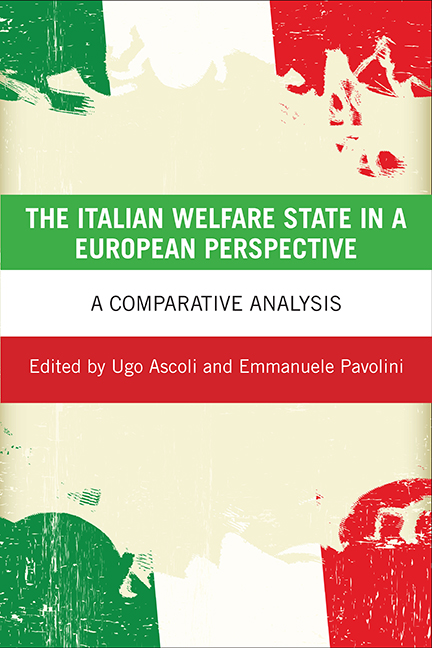eleven - How many Italian welfare states are there?
Published online by Cambridge University Press: 08 March 2022
Summary
Introduction
The analysis on the link between inequalities and the welfare state in Italy has traditionally presented a significant feature: besides other types of social inequalities (see Chapter One), territorial ones are rather important (Fargion, 1997; Colombo and Regini, 2008; Mingione, 2001; Madama, 2010). Assessing how the Italian welfare state has changed, and what the interplay between the changes and social inequalities has been, thus requires a focus on territorial inequalities. In this chapter, ‘territorial inequalities’ mean differential access to similar welfare state services by geographical areas at the sub-national level.
The link among territories, welfare state provision and inequalities has been strengthened over recent decades by the institutional changes that have also taken place in Italy. In particular, in many policy fields, a process of decentralisation has occurred (Fargion, 2000; Rodriguez-Pose and Gill, 2003; Kazepov, 2010). This process has meant the transfer of powers, responsibilities and (not necessarily adequate) resources from the ‘centre’ to regional and local governments (Kazepov, 2010).
Moreover, changes in social needs are making services (at the local level) more important and transfers (from the national level) relatively less central (Taylor-Gooby, 2004; Esping-Andersen, 2009). A large part of the so-called social investment approach (Morel et al, 2012) is based on services (education, care, etc). Consequently, analysing how services are developed at the local level and how provision changes from one area to another can yield quite significant insights into how welfare states work and how they protect individuals and households.
While numerous countries have adopted decentralisation, relatively few have the same level of territorial differentiation in terms of economic development as Italy (Brandolini and Torrisi, 2010), as well as in terms of the performance of local public administrations (Cannari and Franco, 2010). In particular, Southern Italy is an area where the level of economic development has been and remains substantially lower than in Central-Northern Italy, and where public bureaucracies function in a more unsatisfactory way (Fargion et al, 2006).
The three main questions that the present chapter seeks to answer are the following. Does it still make sense to describe the Italian welfare state, at least in its service provision part, as one welfare state, or would it be better to start framing it in terms of different models?
- Type
- Chapter
- Information
- The Italian Welfare State in a European PerspectiveA Comparative Analysis, pp. 283 - 306Publisher: Bristol University PressPrint publication year: 2015

